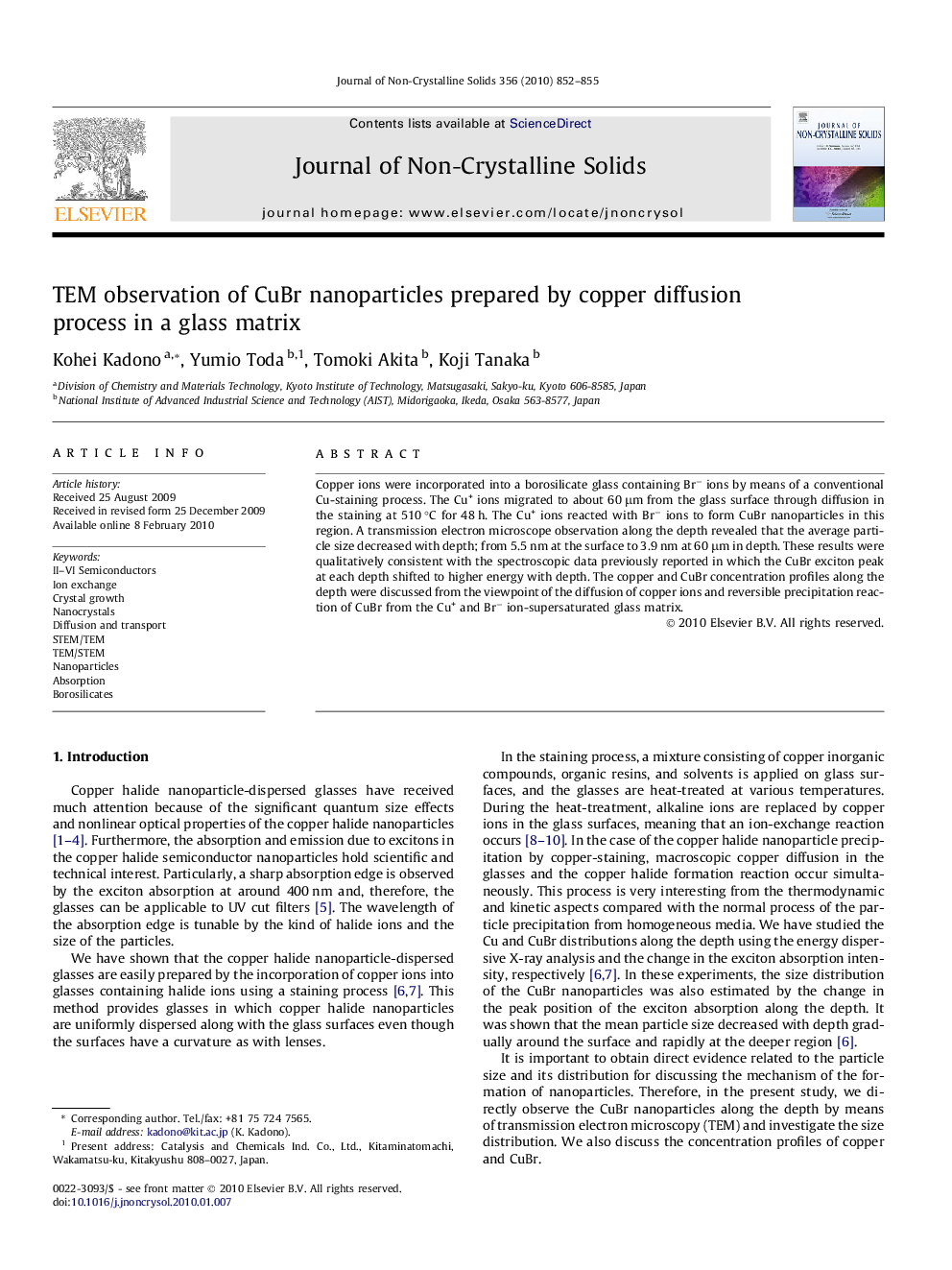| Article ID | Journal | Published Year | Pages | File Type |
|---|---|---|---|---|
| 1483130 | Journal of Non-Crystalline Solids | 2010 | 4 Pages |
Abstract
Copper ions were incorporated into a borosilicate glass containing Brâ ions by means of a conventional Cu-staining process. The Cu+ ions migrated to about 60 μm from the glass surface through diffusion in the staining at 510 °C for 48 h. The Cu+ ions reacted with Brâ ions to form CuBr nanoparticles in this region. A transmission electron microscope observation along the depth revealed that the average particle size decreased with depth; from 5.5 nm at the surface to 3.9 nm at 60 μm in depth. These results were qualitatively consistent with the spectroscopic data previously reported in which the CuBr exciton peak at each depth shifted to higher energy with depth. The copper and CuBr concentration profiles along the depth were discussed from the viewpoint of the diffusion of copper ions and reversible precipitation reaction of CuBr from the Cu+ and Brâ ion-supersaturated glass matrix.
Keywords
Related Topics
Physical Sciences and Engineering
Materials Science
Ceramics and Composites
Authors
Kohei Kadono, Yumio Toda, Tomoki Akita, Koji Tanaka,
